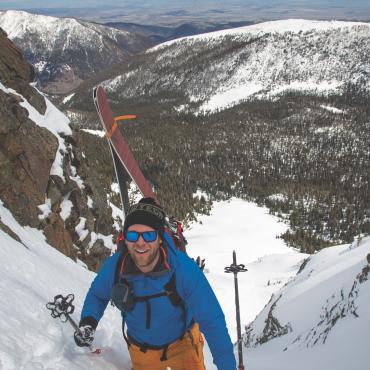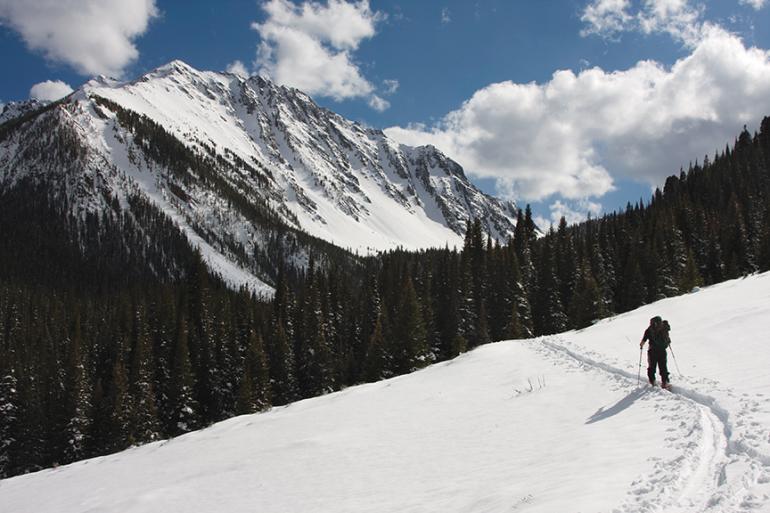Back to the Backcountry
Preparing for a deep ski season.
For diehard skiers, the first turns of the year are usually made in the backcountry. Whether it’s hiking up Bradley's Meadows at Bridger after the first decent dump, or skinning up Beehive for some high-altitude dust-on-dirt, late-autumn skiing around Bozeman can be a lot of fun. Good preparation, however, goes a long way toward making those first outings safe and successful, and reduces the chances of epic-ing. Here’s what you need to know.
Safety
If there’s enough snow to ski (even just barely), there’s enough snow to slide. Put new batteries in your beacon and carry it, along with a shovel and probe—even if you think there’s zero chance of an avalanche. On that same note, practice using your beacon—it’s been months, and you can never practice enough. Get together with friends, drink a few beers, and try to stump each other with beacon drills in a grassy field. Better yet, head to the woods for a more realistic drill.
Gear
Fall is the best time to check out your gear, make repairs, and get psyched on a new season. Make sure to rewax your skis—spring wax stinks in cold snow—and re-glue skins if they’ve lost their “stick.” Most boot liners are heat-moldable these days, but the foam compacts over time and leaves you with excess volume. If you have more than about 50 days in your boots, remold them for a fresh fit—most liners are good for several heat cycles. If you have adjustable poles, pull the sections apart; it’s likely you have oxidation on the shafts. Clean the shafts with Simple Green to avoid getting a pole stuck in “Tiny Tim” mode on the first trip of the year. Finally, replace consumables in your first-aid and repair kits, and clean and organize your pack. That bologna sandwich you left in the top pocket in May might be a little funky.
Trip Planning
It seems like a long way off, but the seasons have a way of creeping up on us. If you need to take an avalanche course this year, book now. Most local course-providers have their schedules ready by September 1, and most courses take place early in the winter. Running out of time or finding every course full is a crappy reason not to get the education that could save your life.
Same thing goes for that hut trip you’ve been planning. Whether it’s a simple USFS cabin trip, or a guided dream week at a luxury lodge, this is the time to bust out the calendar. By December, reservations for premium dates are usually booked, and you’re stuck with whatever other people didn’t want.
Fitness
The best way to get fit for touring the backcountry, is to go touring in the backcountry. If it’s a dry fall, however, stay active by hiking, running, cycling—anything that gets your body past its anaerobic threshold. Your hip flexors will just have to catch up when it snows. Sitting around drinking beer until the snow’s nice and deep is a surefire way to end up getting sloppy seconds all season.
Drew Pogge guides ski-tours out of Bell Lake Yurt and is the former editor of Backcountry Magazine.










